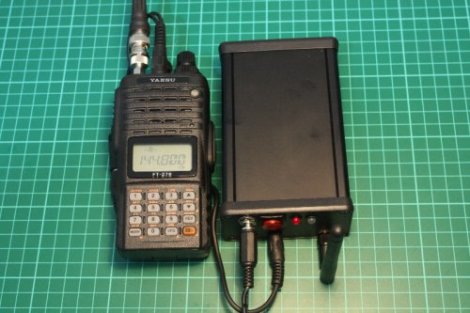
This a screenshot taken from [Pierre’s] demonstration of an electric guitar effects pedal combined with DSP and Pure Data. He pulls this off by connecting the guitar directly to the computer, then feeds the computer’s audio output to the guitar amp.
The foot controls include a pedal and eight buttons, all monitored by an Arduino. Pure Data, a visual programming language, interprets the input coming from the Arduino over USB and alters the incoming audio using digital signal processing. [Pierre] manages the audio connection using the JACK Audio Connection Kit software package.
In the video after the break he’s using a laptop for most of the work, but he has also managed to pull this off with a Raspberry Pi. There’s no audio input on the RPi board, but he’s been using a USB sound card anyway. The other USB port connects the Arduino and he’s in business.
Continue reading “Guitar Foot Controller Uses DSP For Audio Effects”





























